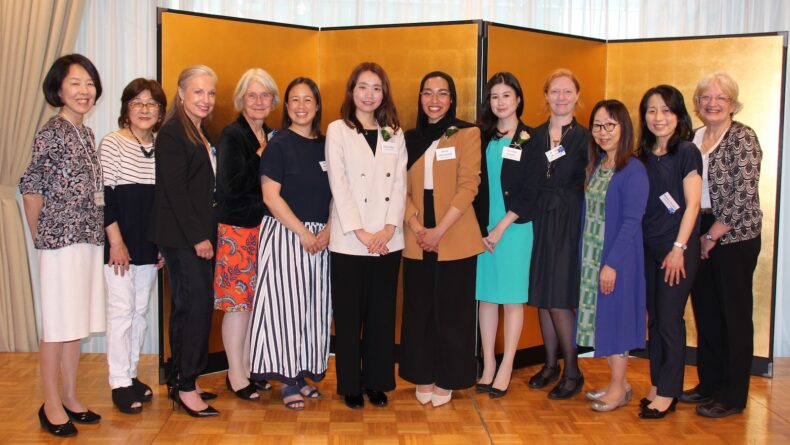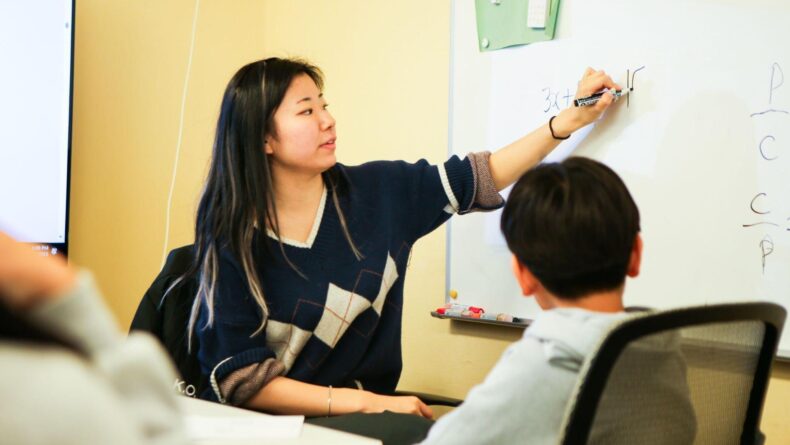In Japan, Distance Learning Is Helping Kids Stay On Track
How Technology Is Opening New Doors For Education
When Prime Minister Abe asked schools to shut amid COVID-19 fears, a lot of questions emerged. Among them, how could we continue kids' education with no regular schooling for at least 1 month?
On February 27, Shinzo Abe asked all schools in Japan to close until the end of the Spring Holidays in order to contain the current coronavirus outbreak. Despite an urgent and sudden request, most of the schools abided and closed doors on the day following the official announcement. As a result, kids in Japan were not schooled and had a lot of free time in their hands for more than a month.
New technologies, new habits
Ever since the coronavirus outbreak started to become a hot topic in Japan, the Government and other public institutions asked workers to shift to a remote schedule as much as possible. A quick look in Tokyo public transportation will quickly reveal that most of its users are office workers. That simply means that a computer and the internet could be enough for them to fulfill their everyday duties while practicing social distancing.
Remote working (テレワーク, telework) was encouraged in Japan for quite some time by public advertisement and official demands related to the Olympics, for example. We’re still a long way from making the switch to a society where remote work and work-life balance is the norm. However, as the COVID-19 situation seemed to have quickstart the debate around this question—what about remote schooling?
We’re still a long way from making the switch to a society where remote work and work-life balance is the norm
With only one night given to schools in order to set-up an effective set-up to perpetuate kids’ education on distance, it seems safe to say that it was nearly impossible to land on a perfect remote learning system this march. However, all relevant applications and software do already exist.
The recent evolution in terms of internet technologies—such as The Cloud emergence or distant meeting software—, the predominance of computer, tablet or phone-equipped households and a new generation of kids being tech-savvy from a really young age is forming a set of conditions that could definitely allow distance learning to work.
From the classroom to your living-room
Some schools were more prepared than others, having already integrated new technologies in their everyday flow and systems ready to be used by students and in fact, a lot of options to learn online for kids were already widely available. The official announcement by Prime Minister Shinzo Abe on February 27 saw the rising of a whole new range of distance learning offers online.
Among them, we spotted Tokyo Coding Club new online classes. Taking the curve of regular learning being more and more adjoined to online learning, the Tokyo based programming school is offering classes and activities for kids from 7 to 18 to help them acquire new skills in almost any programming language—with a free trial and some are even free for enrolled students! The school emphasizes on the need to #StayAtHome to prevent the spread of COVID-19, offering the opportunity of 1-to-1 classes as well as group classes to learn coding, robotics—with kits delivered to your door—or even video production.
Distance Learning: the school of the future?
Another initiative to note is the company SuRaLa Net who offered free online classes to 100 schools in Japan, a good way, of course, to give a taste of online classes to public schools but also to sensibilize the public to this new way of teaching. MOOCs (Massive Open Online Classes) are also an excellent way to keep up if you’re not a kid anymore but still like to stimulate that brain of yours, the University of Tokyo is even opening classes on Coursera.
Hopefully, we live in a digital world and internet technologies are allowing us to connect to anybody in ways it wasn’t possible to even fathom before. Remote work or school and internet technologies are constituting an essential part of social distancing, helping contain the coronavirus and maintain a situation the less stressful possible.
As for now, schools are scheduled to re-open on April 6, according to the regular spring schedule, but the situation is taken day by day—even hour by hour—and could change any minute.

Tokyo Coding Club using Minecraft to teach programming via Distance Learning
What kids have to say about Distance Learning
We could exchange with a group of students and a teacher of Horizon Japan International School, to discuss with them about their feelings towards Distance Learning and how they are adapting to the current situation. Based in Yokohama, Horizon Japan is teaching kids from Preschool to Grade 12. They were already including screens and technologies in the classroom, making the swift easier for both kids and teachers.
As the school bureau witnessed the evolution of the disease in other countries, they started training using zoom—a distant meeting application—and getting to know seesaw—the remote learning platform they choose—so that a potential shift to distant learning would be more natural. On March 2, school grounds were fully closed to students and the education team was ready to take on this new challenge and assist the students in this process.
Club activities are even maintained using zoom
When the school shutdown news emerged, it was not a total surprise. The recent evolutions of the global situation were kind of hinting towards such a drastic measure so students were not that puzzled when they were asked to stay home and study there for a while. And so to say, for the three students we interviewed, a typical distance learning day is not so far from a good old regular day at school. They start a little later than usual—9.30 instead of 8.10—and in their living-room but besides that, the classes are the same as they were in school and it looks like a normal day to them. Club activities are even maintained using zoom!
Screensharing, note-taking applications, zoom meetings, and online quizzes are the new learning tools they are using every day. The students are still working with books as well, as the base for their learning patterns in some classes and, of course, combined with all the online tools used to interact and socialize.
When asking them which do they prefer—normal school or remote school?—, answers are actually mixed. One student immediately says that he prefers normal school, the second one is appreciating the fact that he has more time but regrets having less socializing opportunities when the last stated “less socializing but more TV” with a shy smile.
View this post on Instagram
Too much energy?
Sometimes, we tend to forget that school is mainly a lieu of socializing, a place for kids to play and meet their friends—of course— but also to hone their social skills and dissipate the incredible energy they have. For one of our students, this is the hardest part of being away from school and he admits he is getting to the park after school to have a good run with some friends.
No interclass, no playground meeting: remote learning can also be a lonely activity but kids keep using messaging apps and some of them meet with friends. The school is still having counseling slots as well, to help children cope with this difficult situation. They can talk about whatever they would like with the staff—it appears that some students are also emailing the team when needed.
Horizon PYP students are staying active with their teachers Distance Learning continues!#hjis2003 #ibpyp #active #distancelearning #remotelearning pic.twitter.com/8BW63DHEFX
— Horizon Japan International School (@HorizonJapanIS) April 1, 2020
What about the long-term?
It’s obvious that even if kids are keeping up with education and their curriculum, there are both advantages and drawbacks to this new distance learning life. One of our Horizon Japan students regrets the fact that she doesn’t feel like she can ask as many questions as she would in an actual classroom. She has come up with a huge list of questions she will ask teachers when going back to school—in particular for her math teacher. Still, the educative team keeps reassuring the students with off-hours counseling or more simply online meetings set-up to follow closely kids on their learning path.
Our sample teacher and students admit that the situation is not as convenient as a one to one meeting inside a class or the school. When asking them if they think this distance learning system will hold on a long-time basis, the answer is pretty straight-forward: it’s doable, but not the best. Is it perfect? Of course not, but it seems like the best option at the time and both students and staff at Horizon Japan are working to make this work.
The kids miss their teachers, the classrooms and their classmates! All of our interviewee students want to come back to school but they know they are doing the right thing at the moment. They are pretty confident distance learning is working though—but lacks a way to have fun, socialize, and exercise, if we have to summarize.
One difficult point here is that the situation is perpetually evolving, and Horizon is adjusting day by day for everyone—students, teachers, staff and family—to stay safe and keep up, one step at a time.
Thank you to Horizon Japan International School for letting us sat—online— and exchange with them and some students. A huge thank you to these dedicated students for being so open and honest!















Leave a Reply